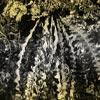Scientists Find Locations On Moon Where Weather Is Consistently Warmer

News Synopsis
On the moon, a team led by planetary scientists has found shaded areas within pits that are consistently cosy around 63 degrees Fahrenheit. In comparison to the rest of the moon's surface, which can get up to 260 degrees hot during the day and 280 degrees below zero at night, the pits and any caverns they may lead to would create safer, more thermally stable base camps for lunar exploration and long-term living.
For lunar exploration and long-term living, the pits and tunnels to which they may lead would provide a safer, more thermally stable base camp than the rest of the moon's surface, which heats up to 260 degrees during the day and lowers to -260 degrees at night.
Since the first pits were spotted on the moon in 2009, researchers have pondered whether these could represent the entrances to caves that could be investigated or utilised as shelters. According to Tyler Horvath, the new research's principal investigator and a UCLA PhD student in planetary science, about 16 of the more than 200 pits are most likely collapsed lava tubes. There is significant evidence that the overhang of one pit may also lead to a vast cave, and two of the most noticeable pits have overhangs that are plainly visible and lead to some form of cave or vacuum.
When molten lava flows beneath a field of cooled lava or a crust forms over a river of lava, a long, hollow tunnel known as a lava tube is created. Lava tubes can also be found on Earth. An opening into the inside of a solidified lava tube may result from the collapse of the ceiling.
In order to determine whether the temperature inside the pits varied from that on the surface, Horvath examined photos from the Diviner Lunar Radiometer Experiment, a thermal camera and one of six sensors on NASA's robotic Lunar Reconnaissance Orbiter.
Horvath and his colleagues focused on a roughly cylindrical, 100-meter-deep pit, about the size of a football field, in the Mare Tranquillitatis region of the moon. They used computer modelling to examine the thermal characteristics of the rock and lunar dust and to track the temperatures of the pit over time.
The findings, which were just published in the journal Geophysical Research Letters, showed that temperatures inside the permanently darkened parts of the pit vary only little throughout the lunar day and stay at roughly 63 degrees. The temperature would be similar to this if a cave emerged from the bottom of the pit, as suggested by photos collected by the Lunar Reconnaissance Orbiter Camera.
The research team, which also included University of Colorado Boulder professor Paul Hayne and UCLA professor of planetary science David Paige, believes the shadowing overhang is to blame for the stable temperature by regulating how hot it gets during the day and preventing heat from escaping at night. The pit floor's sun-baked area, which is around 40 degrees hotter than the moon's surface, reaches daytime temperatures of close to 300 degrees.
The illuminated floor at midday is probably the hottest spot on the entire moon since the Tranquillitatis pit is the closest to the lunar equator, according to Horvath.
Since 2009, Diviner has continually mapped the moon, creating NASA's second-largest planetary dataset and offering the most thorough temperature observations of any object.
You May Like









